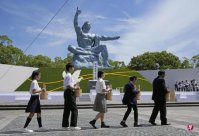
The main purpose of Japan's diplomacy in Southeast Asia after World War II is to use compensation as a leverage to ensure economic rights and interests of resource supply and commodity markets.However, after the 1960s, Japan's Southeast Asian diplomacy will focus on expanding economic cooperation and maintaining the stability of regional political and economic.
With the continuous upgrading of the Vietnamese war, Japan proposed the concept of regional economic development, indirectly to support the United States to support the United States for the strategic goal of maintaining the regional situation.
However, Japan's economic cooperation has triggered the enthusiasm of Southeast Asia to Japan.First of all, through economic assistance, the privilege class of Japanese companies and target countries colludes and become a hotbed of corruption.Secondly, most of the aid in Japan is a loan that can only purchase Japanese materials.Third, through economic assistance, Japan has achieved rapid economic expansion in Southeast Asia, causing vigilance in the region.In 1974, Prime Minister Tanaka, who visited Southeast Asia, suffered a fierce anti -Japanese riots in Indonesia.
Taking this incident as an opportunity, the Japanese government began to re -study Southeast Asian policy.Since then, from the policy of economic cooperation as "economic animals", it has begun to tend to transfer a policy transfer of political role in maintaining the stability of the area.In August 1977, Prime Minister Fukuda visited Southeast Asia and proposed "Futianism". The content was: 1. Japan does not do military powers; 2. Japan and Southeast Asia establishes a mutual trust relationship;, Japan must contribute to the peace and prosperity of the region.
Futian's heads of the Asia -Rim countries show that the Japanese government's government development assistance (ODA) multiplication guidelines have shown a generous attitude in economic cooperation.In the case of the decline in the sense of communistization of India's branch and the presence of the United States in Southeast Asia, for the Asians of the country, the countries that can rely on are Japan.In fact, after Japan clarified Fukuda, the economic relations with various countries in Asia have further deepened.From the 10 years from 1977 to 1987, Japan's Asia Jia'an trade jumped from $ 15.7 billion to US $ 35.1 billion, and the direct investment jumped from $ 600 million to 1.5 billion US dollars.Essence
With the signing of the square agreement in 1985, the rapid appreciation of the yen brought a great blow to Japan's export industry. Japanese companies took this opportunity to transfer production bases to overseas centered on Southeast Asia.At the same time, Japan and Southeast Asian countries have transformed from the previous vertical economic relations to the horizontal economic relations of the same industrial product interaction, and accelerate the economic development of Asian geese.
The Asian currency crisis caused by the plunge of Thailand's Thailand in 1997 caused a heavy blow to the economy of East and Southeast Asia.For the crisis of ASEAN countries, Japan has launched more than $ 30 billion in Miyazawa ideas to actively provide economic support.In addition, in order to cope with the financial crisis in the future, Japan leads Chiang Mai's initiative.Xiao Yuanhui, then Prime Minister, launched support policies, and was praised by Asians as "Xiaoyuan initiative" by Asian, which greatly enhanced Japan's sense of existence.
However, Japanese diplomacy has stopped here in Southeast Asia.In the 1990s, China's economy developed rapidly, and the economic scale increased four times.Then, China also began to actively implement foreign policies and signed a free trade agreement with Asian'an in 2002.Faced with China's positive attitude, Japan also concluded an economic cooperation agreement including investment and personnel flow with the Asianianan countries, trying to make a comeback.
However, after 2000, Japan -Asia's Diandan relations have been weakened with the tightness of China -Asia's Film Relationship.Japan's diplomacy for Asia's metropolis has increased its influence on Asia's details in Asia's details and moves to defensive directions.Moreover, with the expansion of China to the ocean, the Ministry of Foreign Affairs of Japan has changed its policy in the region to avoid the contribution of military affairs and promote its ability to build maritime in Southeast Asian countries through the "use ODA strategy".
In fact, in the joint vision statement issued at the 50th anniversary of the 50th anniversary of the 50th anniversary of the Japanese Yajia'an Friendship Cooperation in Japan, proposed "free and open India Pacific" and "democraticism, human rights" and other initiatives.At the same time, I also sent information about China.At the same time, as the government's official security assistance (OSA), Japan also stated to Malaysia that providing difficult boats and alert monitoring drones.Japan used ODA to provide large -scale inspection vessels with ODA.Today's Japanese diplomacy, under the fierce competition situation of the United States and China, will position diplomacy in Southeast Asia at an important position.
However, the Asianan countries do not want to cooperate with the United States or China.They hope to reduce the risks of hegemony and alliance politics between the great powers and maintain the unity of Asia.If Japan demands that Southeast Asian countries choose China or Japan, the Asianan countries will be discouraged by cooperation with Japan.In the future, the key to the development of diplomacy in Japan and Asia's Diange is to fully consider the idea of Asia's detailed security, and clearly put forward that Japanese diplomacy as a "peer partner" in the true sense, maintaining a regional peace and stable posture with Southeast Asian countries.
The author is a professor at the Law Department of Beihai Academy, Japan




